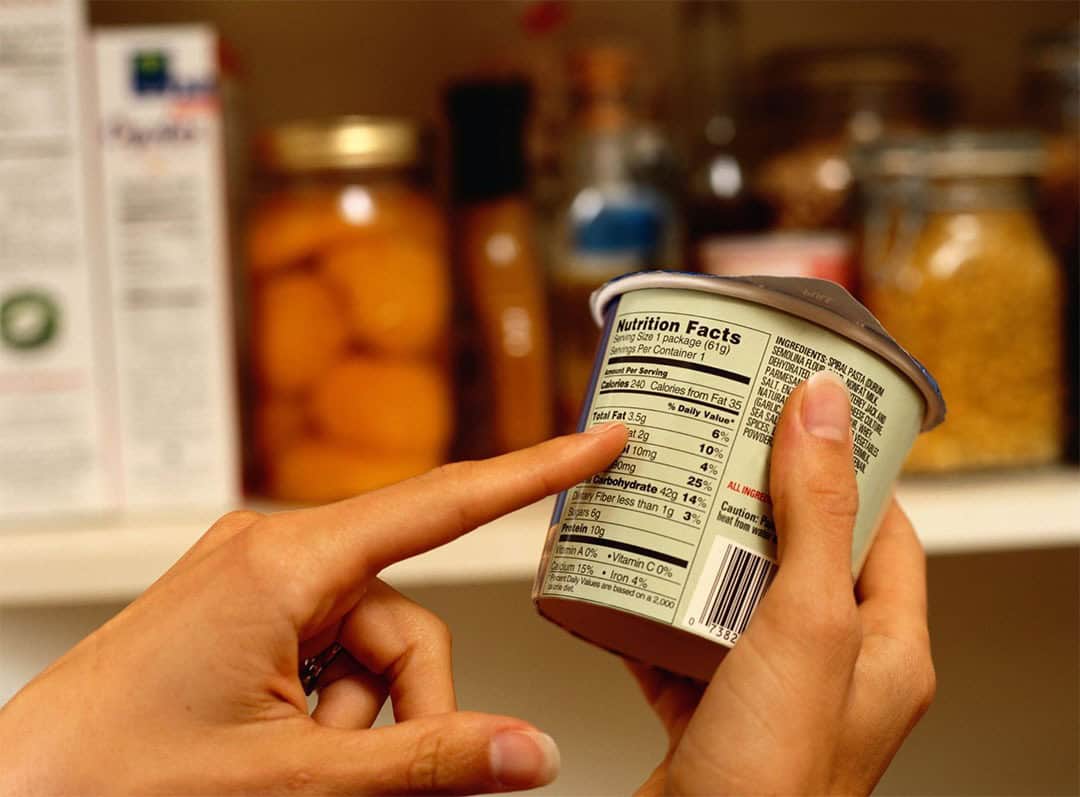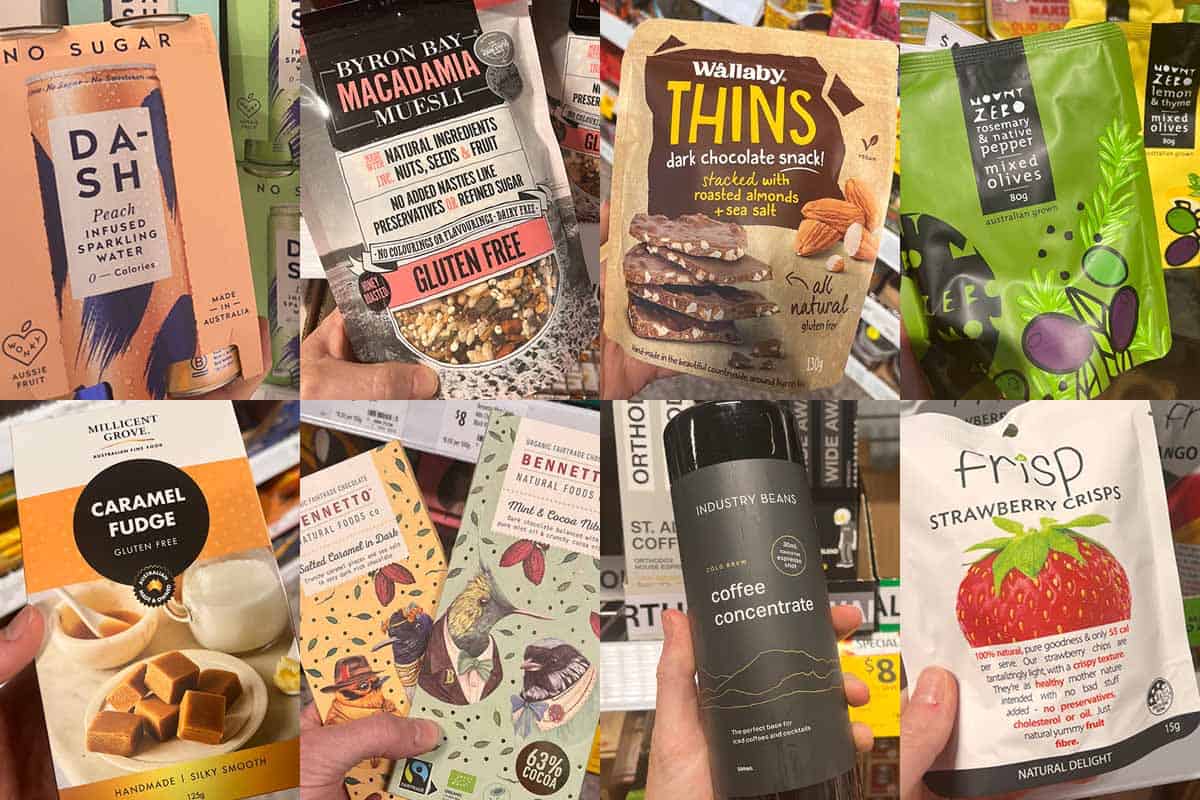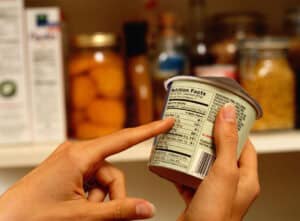
By Jessica Milliner — Coeliac & Gut Health Dietitian
With over 10 years of experience as an Accredited Practising Dietitian, Jessica helps adults confidently navigate a new diagnosis of gluten sensitivity and assist those who may be suffering with ongoing symptoms and/or uncertainty around the gluten free diet.
Boosting your energy levels on the gluten free diet really is as easy as…
“Just focus on whole, unprocessed foods”, says the Coeliac & Gut Health Dietitian.
You think, “That’s easier said than done! What do you actually mean?”
Have you ever wondered if there is something more than just being a busy person that is causing you to feel fatigued and low in energy?
Fatigue is one of those things that can easily slide in the background because it doesn’t generally cause us pain or stop us from doing most things. It’s something we just tend to persevere with until one day, we think to address it and book ourselves a doctor’s appointment to investigate what might be going on.

Although I’d highly recommend seeking advice from your health care professional as a crucial first step, recognising the impact your gluten free diet may be having on the way you feel should also be considered. That’s because nutrient deficiencies can actually contribute to feelings of fatigue.
Here are the 5 key nutrients to be mindful of in your gluten free diet when it comes to boosting your energy levels:
1. Iron
2. Folate
3. Magnesium
4. Vitamin B12
5. Vitamin D
Below you’ll find guidance on the importance of these nutrients and how to incorporate them effectively into your gluten free diet. Also, make sure to check out my social media post at the end of this blog, where I share tips on how to shop smart in the grocery store for these nutrient-rich foods.
1. Iron
One nutrient that most often gets the spotlight for fatigue is iron. With its primary function of delivering oxygen around the body and producing energy, it’s no wonder an inadequate intake of this important mineral leaves you feeling a little flat.
Furthermore, if your ability to absorb it is impacted (i.e., in undiagnosed or poorly managed gluten related disorder), or you have increased requirements or you are vegetarian, vegan or are a ‘fussy eater’, you are at much greater risk of being deficient in iron.
Did I mention your gluten free diet may also play a role here? Here’s why:
- Going gluten free means restricting many staple sources of dietary iron such as wheat-based products (bread, pasta, cereal) and finding gluten free alternatives which are fortified with iron may be more challenging.
- Unlike most wheat-based breakfast cereals and breads which are fortified with iron, most gluten free products are either not fortified at all or fortified to a lesser extent.
- Individuals following a gluten-free diet may focus more on avoiding gluten-containing foods rather than ensuring a balanced and varied diet (i.e., not substituting gluten containing wholegrains for gluten free wholegrains). This could lead to unintentional dietary imbalances and deficiencies, including iron deficiency.
- Therefore, if you follow a gluten free diet, incorporating naturally gluten free, iron rich food sources are really going to help with boosting your energy levels!
Here’s how to get more iron into your gluten free diet:
- Incorporate naturally gf foods like lean meats, poultry, fish, and beans into your diet.
- Include leafy greens such as spinach & kale as they are rich in non-heme iron. Include them in salads, smoothies, or sautéed dishes.
- Add nuts & seeds where possible. Snack on iron-packed seeds like pumpkin seeds or enjoy a handful of almonds, but make sure they are labelled gf. Ground nuts & seeds are also a great addition to baking and bliss balls, particularly if you or your child does not like eating them in their whole form.
- Look for GF products fortified with iron, such as GF cereals (For example, Sanitarium gluten free Weet-Bix).
- Pair your non-animal-based iron food sources with Vitamin C sources such as citrus fruits, capsicum, tomato and strawberries to enhance iron absorption.
2. Folate
Low dietary folate intake can go under the radar as a possible reason for feeling fatigued, as many would assume that if you swap your gluten-containing products such as bread, pasta and cereals, for the gluten free alternative you should be good to go!
Wrong! Unlike the mandatory fortification of wheat-based bread with folate in Australia and New Zealand, gluten free breads miss out (or at least some do as it’s not mandatory) or are certainly less available.
Added to this is the notion that people who follow a gluten free diet tend to eat less bread than they otherwise probably would if they could consume wheat -based bread (with wheat, rye and barley all being naturally good sources of folate), inadvertently reducing their potential folate intake further.
So why does folate matter?
Adequate folate levels are necessary for the production of new cells, including red blood cells, which carry oxygen throughout the body. Without enough folate, the synthesis of new cells is impaired, leading to decreased oxygen-carrying capacity and potentially resulting in fatigue and weakness. There is also a load of other physiological reasons low folate can contribute to fatigue.
Now it may seem a little challenging to get adequate sources of dietary folate on your gluten free diet to give you the energy boost you need; however, it is possible!
Here’s how to get more folate into your gluten free diet:
- Look for gluten free grains and cereals that are fortified with folic acid or folate. Check the nutrition labels to ensure they contain added folate and enjoy these fortified foods as part of your meals. Hot tip: Sanitarium Gluten Free WeetBix is fortified with folate too!
- Include plenty of leafy greens such as spinach & kale in your diet. These vegetables are excellent sources of folate and can be enjoyed in salads, soups, stir-fries, or as side dishes.
- Beans, lentils, chickpeas, and peas are all rich sources of folate. Add them to curries, soups, stews, salads, or make bean-based dips like hummus for a nutritious snack.
- Citrus fruits such as oranges, grapefruits, lemons, and limes are good sources of folate. Enjoy them as a snack, add them to salads, or squeeze fresh citrus juice over your meals.
- Avocado is a nutrient-dense fruit that contains folate. Enjoy sliced avocado on gluten-free toast or corn thins, add it to salads, or blend it into smoothies for a creamy texture.
- Broccoli and asparagus are not only delicious but also rich in folate. Incorporate them into stir-fries, pasta dishes, or enjoy them as roasted side dishes.
- Certain nuts and seeds, such as almonds, peanuts, sunflower seeds, and flaxseeds, contain folate. Enjoy them as snacks, add them to salads, or use them as toppings on yoghurt or breakfast cereal.
3. Magnesium
It is known that people who are following a gluten free diet tend to consume less wholegrains and generally have a lower fibre intake as a result. Think about your own situation here…
Do you enjoy gluten free wholegrains such as quinoa, brown rice, buckwheat, sorghum and millet and consume them as you would with gluten containing wholegrains like wheat, rye and barley? Or does the thought of eating bread (even if gluten free) still bring back terrible memories of what it was like before you went gluten free? Or perhaps you just don’t know how to substitute the gluten containing wholegrains for the gluten free alternatives?
All of these factors play a role in your overall diet quality, and in particular may affect your magnesium intake – with gluten free wholegrains being a great source of magnesium! Magnesium is involved in over 300 biochemical reactions in the body, including energy metabolism and muscle function and a deficiency in this nutrient can lead to fatigue, weakness, and muscle cramps.
Here’s how to get more magnesium into your gluten free diet:
Experimenting with different gluten free wholegrains is a great way to boost your magnesium intake. Other great sources which are all naturally gluten free include:
- Leafy green vegetables
- Nuts & seeds, legumes
- Dairy products
- Seafood
Additionally, magnesium supplements may be considered under the guidance of a healthcare professional, especially for individuals with medical conditions that affect nutrient absorption.
4. Vitamin B12
Unlike the potential effect of the gluten free diet on dietary sources of iron, folate and magnesium, vitamin B12 should be minimally impacted and that’s because vitamin B12 comes mainly from naturally gluten free animal sources such as meat, fish, dairy products and eggs.
So why are people who follow a gluten free diet at risk of vitamin B12 deficiency?
Well, it’s not the gluten free diet per se, however rather an individual’s ability to absorb this nutrient that has a crucial role in energy production, red blood cell formation and neurological function. Nutrient absorption can be impacted by undiagnosed gluten sensitivity and unfortunately malabsorption issues may continue even after adopting a gluten free diet.
Fatigue, weakness, and neurological symptoms such as numbness and tingling in the extremities are all symptoms of vitamin B12 deficiency. It’s important to discuss these symptoms with your healthcare professional for a correct diagnosis and to ensure that any underlying health issues are properly addressed.
Here’s how to get more vitamin B12 into your gluten free diet:
- Including meat, fish, dairy products, and eggs in your gluten free diet is a great way to help boost your energy levels.
- But what if you’re vegetarian or vegan? Unfortunately, our body does not produce vitamin B12 therefore it’s important to get it from external sources, either through diet and/or supplements. Always consult with your dietitian or healthcare professional before commencing a supplement.
5. Vitamin D
Not only is vitamin D important for bone health, immune & muscle function, but vitamin D deficiency has also been linked to fatigue and low energy levels and is a common deficiency in people following a gluten free diet.
Optimising vitamin D levels is easiest through regular sun exposure, which shouldn’t be a problem if you live in Australia, however supplementation may be required during the winter months if your sun exposure is limited.
Ensure your gluten free diet also includes vitamin D rich foods such as include such as:
- Fatty fish (e.g., salmon, sardines, herring)
- Eggs
- Fortified margarines and milk products*
*In Australia, vitamin D fortification is mandated for margarines. It is voluntary for low-fat milk, yoghurt and soy milk.
Although this blog goes into detail about the specific nutrients which play a role in boosting energy levels and their dietary sources, my key take home message is to focus on making whole, unprocessed foods the centrepiece of your gluten free diet.
A balanced gluten free diet means including a variety of fruits & vegetables, gluten free wholegrains, lean proteins, dairy products, eggs, legumes, nuts & seeds, which will ensure you are getting all the nutrients you need from your diet. For a helpful guide to some nutrient-packed choices, check out the list on my Instagram post below!
If you are unable to include some of these foods in your diet, supplementation may be necessary to help prevent or overcome any nutrient deficiencies and subsequent feelings of fatigue. Remember to always consult with your health care professional before commencing a supplement.
And, if you do suffer from medical conditions triggered by gluten where nutrient absorption may be impacted, regular monitoring is recommended to guide whether supplements are required.
Remember in addition to looking at ways to boost your energy levels on the gluten free diet, adopting healthy lifestyle habits also plays an important role in how you feel.
If you’re interested in optimising your gluten free diet to boost your energy levels, working with a dietitian who specialises in the gluten free diet should be your next step! You will receive personalised diet & lifestyle advice to help you achieve your goals and ultimately feel better living gluten free.
To find out more, visit:











